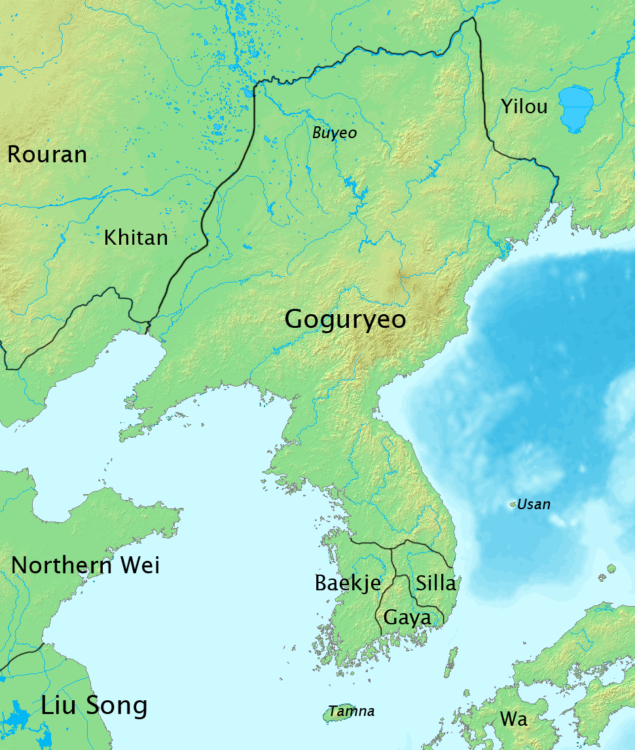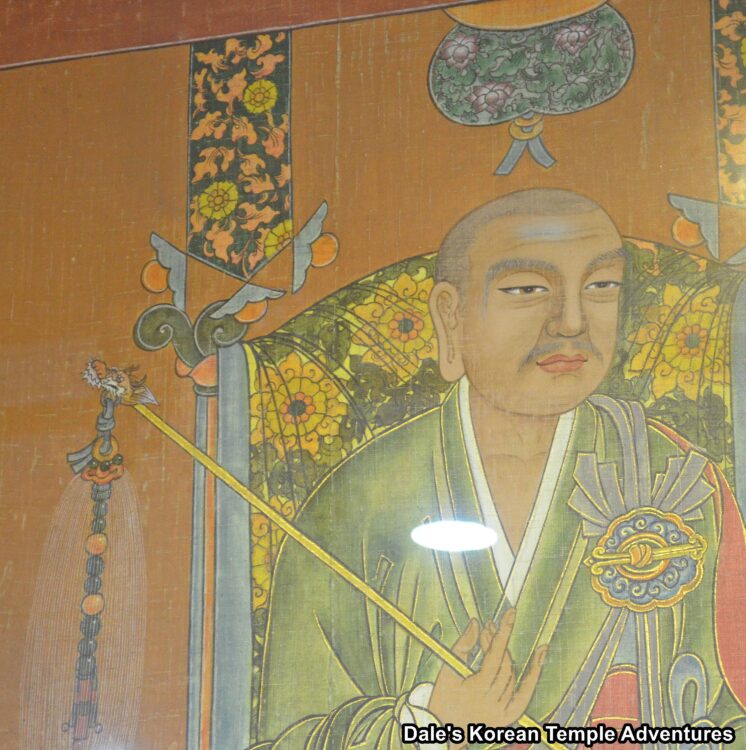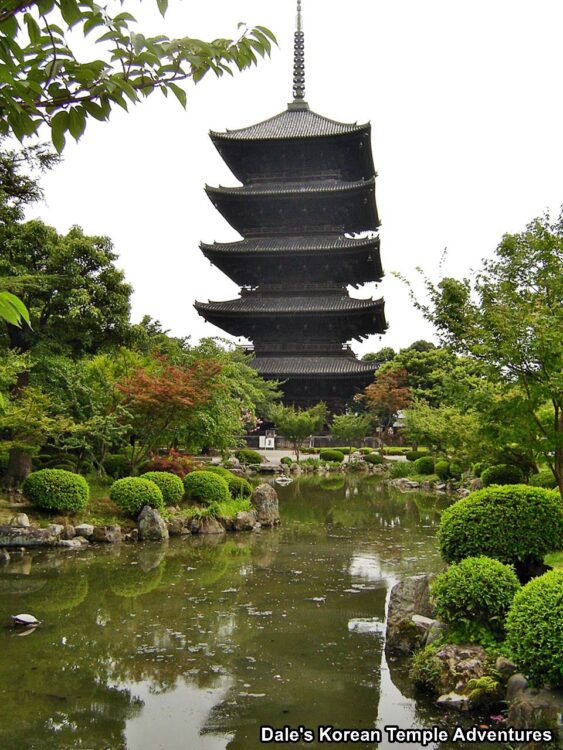Origins – The Goguryeo Kingdom (37 B.C. – 668 A.D.)

The ancient Goguryeo Kingdom (37 B.C. – 668 A.D.) was once located in present day southern Manchuria, the Russian Maritime Provinces, and the northern part of the Korean peninsula. Just before Buddhism was introduced to the Goguryeo Kingdom, and during the reign of King Gogugwon of Goguryeo (r. 331 – 371 A.D.), it was devastated by several natural disasters. In 365 A.D., there was a large earthquake. And in 368 A.D., there was a severe drought, which resulted in a massive famine, and reported cannibalism, in 369 A.D. It was under these circumstances that people lost faith in the indigenous religion of Korean shamanism. Also, the Goguryeo Kingdom had been dealt severe militaristic blows by the neighbouring Baekje Kingdom (18 B.C. – 660 B.C.). In fact, in 371 A.D., Goguryeo’s largest city, Pyongyang (now in present day North Korea), was sacked and the Goguryeo king, King Gogugwon, was killed in the Battle of Chiyang. It was under these circumstances that the Goguryeo Kingdom had to re-organize its institutions: both politically and religiously. As a result of these combined problems, both natural and man-made, the Goguryeo Kingdom needed something new to believe in. And it was through political circumstances that this belief, in the form of Buddhism, came about.

Buddhism was first introduced to the Korean peninsula through the Goguryeo Kingdom in 372 A.D. Similar to shamanism, Buddhism also believed in good fortune. This similarity made it easier to be accepted by the indigenous Korean population. This acceptance was recorded in the Samguk Sagi, or “The History of the Three Kingdoms” in English. In the Samguk Sagi, it’s recorded that “In the summer of the sixth month of the second year [of King Sosurim’s reign] 372 C.E., King Fu Jian (r. 357 – 385) of Qin dispatched an envoy and the Buddhist monk Sundo (613-681 A.D.) with Buddhist images and Buddhist texts.” In return, as a sign of appreciation, King Sosurim sent an envoy to China with gifts. And in just two years, the Chinese monk, Ado-hwasang of Former Qin, visited the Goguryeo Kingdom. This is supported, again, by the Samguk Sagi. It states, “In the fourth year [of King Sosurim’s reign], the monk Ado came. In the spring of the second month of the fifth year [375 A.D.], Seongmunsa Temple was built for Sundo and Ibullamsa Temple for Ado. That was the beginning of Buddhism in Haedong [Korea].” Thus, the early spread of Buddhism along the Korean peninsula started. And the reason it was adopted so readily in the Goguryeo Kingdom, as was hinted at before, was for political reasons. Former Qin China was a very powerful neighbour, and the Goguryeo Kingdom didn’t want to create any problems with their more powerful neighbour. So Buddhism, a religion that has helped define the nation of Korea, was first accepted to politically appease, and smooth over, relations with the Former Qin Chinese.
As a bit of an interesting side note, it’s a bit hard to believe that Buddhism only arrived in Korea when the royal court officially recognized it in 372 A.D. And this hunch would be correct, because records exist stating that Buddhism was present in the Goguryeo Kingdom prior to 372 A.D. A letter written by the monk Chih-tao-lin (314 – 366 A.D.), who was from Eastern Qin, was written to a Goguryeo monk. This letter appears in the “Liang Biographies of Eminent Monks.” In this letter, the writer praises Chu Chien (268 – 374 A.D.), who was another monk from Eastern Qin. Unfortunately, the exact date of the letter is unknown; however, it’s fair to assume that Chin-tao-lin wrote it sometime during his lifetime, which predates the generally help belief that Buddhism arrived in the Korean peninsula in 372 A.D. So while Buddhism was officially recognized by the Goguryeo court in 372 A.D., certainly a form of Buddhism predates this important year in Korean Buddhist history. What is most likely is that Buddhism was known to a small group of individuals in the Goguryeo Kingdom.

Twenty years later, and through institutional reform, Buddhism had grown so much during Gwanggaeto the Great’s rule (r. 391 – 413) that there were nine temples in the city of Pyongyang. Monk Tanoki was the first monk to really promote Buddhism in the Goguryeo Kingdom. Monk Tanoki was a foreign born monk from Former Qin (351 – 394 A.D.). He arrived in Goguryeo in 395 A.D.. With him, he brought several Buddhist texts. He achieved most of what he accomplished in the promotion of Buddhism in Liaodong, Goguryeo, before returning to Former Qin China in 405 A.D. King Gwanggaeto the Great did a lot himself to promote Buddhism in the Goguryeo Kingdom. He ordered officials to build national temples and repair royal ancestral shrines. This, for obvious reasons, helped Buddhism spread both through royal recognition and patronage. And with strong and active diplomatic ties with Northern Wei (386 – 534) and Southern Qi (479 – 502), the Goguryeo Kingdom became the strongest kingdom in Northeast Asia; and with it, the spread of Buddhism continued to grow. Interestingly, it was during this time that the prominent monk Uiyeon headed diplomatic initiatives for Goguryeo. He studied in Southern Qi, in the capital city of Ye. During his studies, he focused on a series of Mahayana Buddhism texts like the “Ten Stages Sutra,” and “Great Perfection of Wisdom Treatise.” It was this knowledge that helped to further Buddhism in Korea. Additionally, it was with this knowledge that he started an academic tradition through Mahayana Buddhism all across the Korean peninsula.
There are a couple of interesting things that occurred in the Goguryeo Kingdom as Buddhism took root. First, and through archaeological finds at Goguryeo tombs, paintings inside the tombs prove that Buddhism, shamanism, and Taoism co-existed in the religious lives of the upper class. Secondly, early Buddhism monks were also employed as spies for the nation. An example of this is when the monk Torim went to the Baekje Kingdom, during King Jangsu of Goguryeo’s reign (r. 413 – 491), where he was accepted at the royal court. As part of his efforts, he acquired information and depleted the Baekje financial resources. Furthermore, his efforts helped lead to the capture of the Baekje capital of Hansan in 475 A.D. by Goguryeo forces. Also, in the final few decades of Goguryeo Kingdom’s existence, the monk Dokchang, in 642 A.D., managed to garner information about a planned attack against the Goguryeo Kingdom by a military force of some 10,000 Silla soldiers.

In the latter stages of the Goguryeo Kingdom, several monks traveled to Japan to promote Goguryeo Buddhism. In fact, the Goguryeo monk Hyeja went to Japan and taught Prince Shotoku (574 – 622 A.D.) in 595 A.D. Additionally, the Baekje Kingdom’s monk Hyechong also visited Japan to promote Korean Buddhism in 595 A.D., as well. These two monks helped create the foundation for Japanese Buddhism. As a result of these efforts, in October, 596 A.D., Hokoji Temple was built by royal order in Japan.
The Goguryeo Kingdom was the first to accept and promote Buddhism on the Korean peninsula. While never as popular as it would become in the Baekje and Silla Kingdoms, the Goguryeo Kingdom would play an integral part in the transmission of Buddhism throughout the rest of the Korean peninsula and the Far East. Initially accepted for political reasons, Buddhism in the Goguryeo Kingdom would eventually grow through royal and popular support. In fact, it became so well established and respected that it helped form, in part, the foundation of Buddhism in Japan.